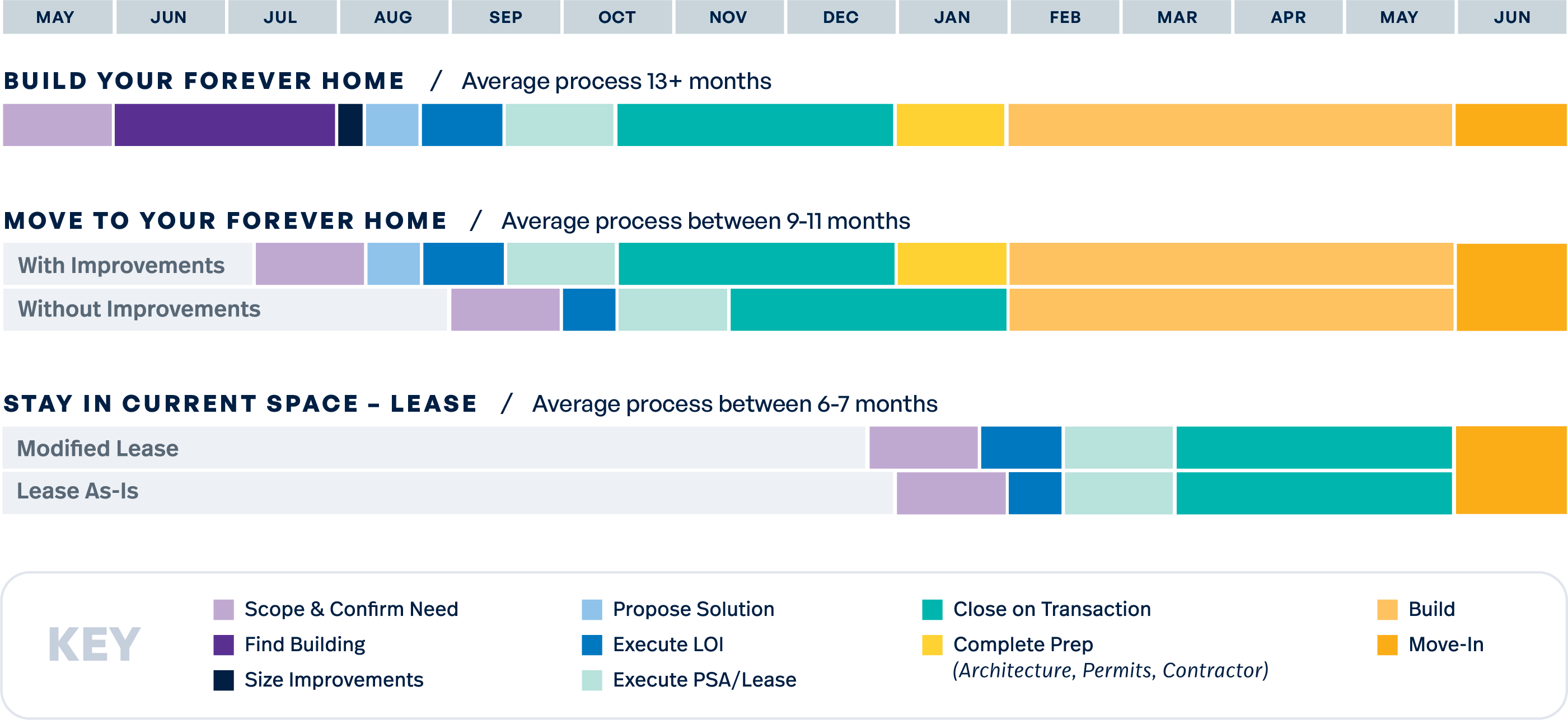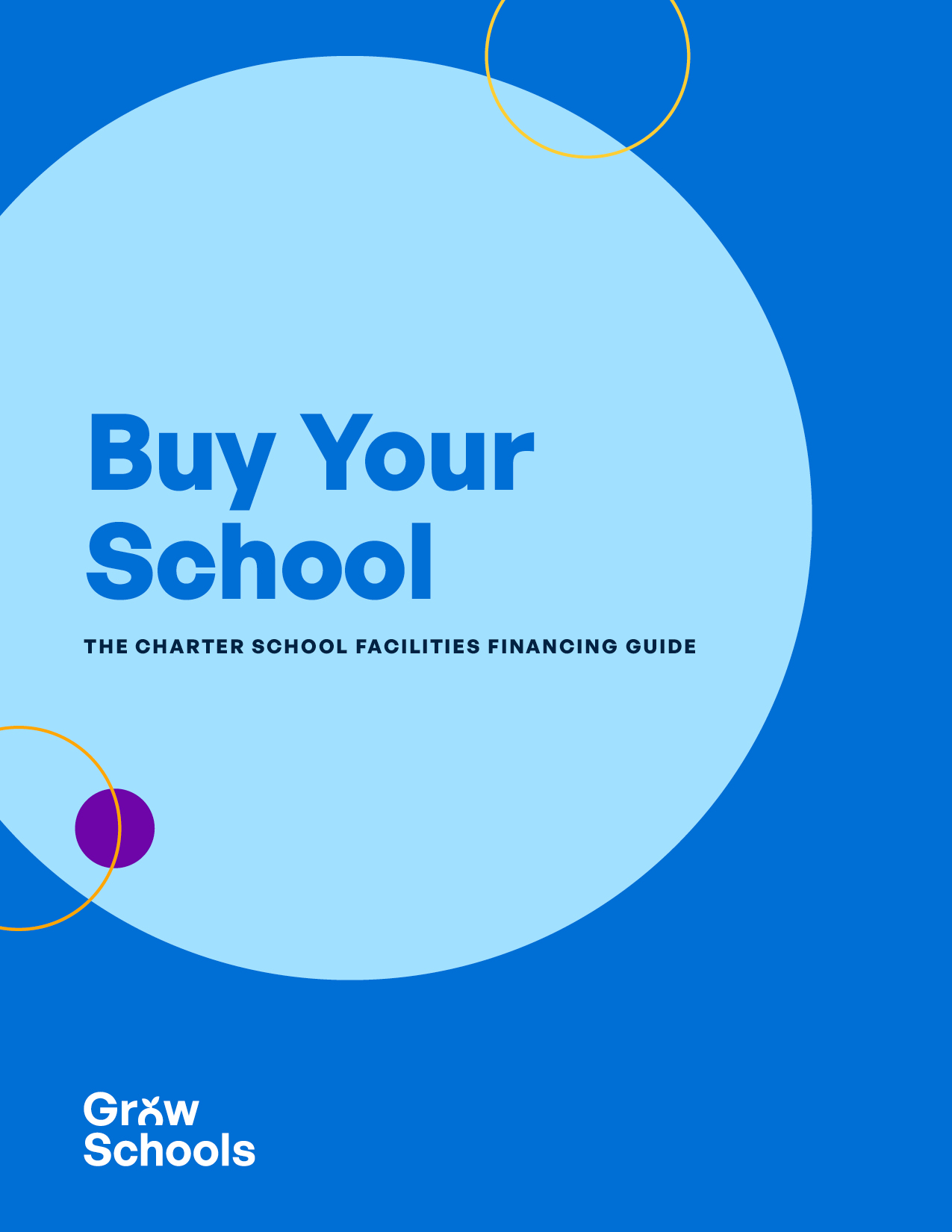The decision to buy or expand a school is a pivotal moment in the life of any school. It represents an opportunity for growth, stability, and the chance to provide an ideal learning environment for students.
However, in today’s educational landscape, this decision is not without its challenges. Let’s explore why timing is everything when it comes to buying your school—we’ll discuss how to stay informed, how to collaborate with your team, and how to make decisions that align with your school’s mission and vision.
Reasons to Buy Your School
Buying your school building allows institutions to become a beacon of stability in your community, providing a sense of permanence and reliability. Building ownership can also be a sound financial investment, building wealth over time. Lastly, school ownership can give you autonomy over your facility, enabling improvements and expansion as your school grows.
Despite these compelling reasons, many charter leaders face a challenging reality: the need for more space while grappling with budget constraints.
The Market Realities – Today’s School Buying Landscape
An increasing number of charter schools are seeking to grow and buy properties.
However, several market dynamics complicate this process:
- It’s a Seller’s Market: Sellers are holding onto properties, often with high price expectations, making it challenging for buyers to find suitable options at the right price.
- Supply Chain Delays: Disruptions in the labor market and supply chains have led to delays and increased construction costs.
- Fluctuating Costs: Construction costs have seen fluctuations, with prices varying significantly even within a short period.
- Funding Challenges: Securing funding at reasonable rates can be increasingly challenging, requiring creative financing solutions.
Given these challenges, charter school leaders must adopt strategic approaches to address their space needs without breaking the bank.
Strategic Approaches
When it comes to obtaining school facilities, school leaders can explore various paths: stay in your current space, pursue ownership of your school facility, or undertake new construction to create a custom learning environment. As you consider these options, here’s how to get creative.
- Phase Construction: Consider phased construction or renovation projects to manage costs effectively.
- Optimize Space: Reimagine your ideal school space, determining the precise amount needed to fulfill your mission.
- Explore Alternatives: Consider renting out unused space or repurposing existing facilities to generate funds.
- Stay Informed: Keep a close eye on market conditions and be prepared to act when the timing aligns with your school’s needs.
Several key metrics can guide your decision-making process:
- Average Daily Attendance (ADA): Aim for at least 80% of your ADA to ensure your facility meets your student population’s needs.
- Rent to Revenue Ratio: Ensure your revenue is at least 5-6 times higher than your lease costs, providing financial stability.
- Coverage Ratio: Manage expenses so that your net income is at least 120% of your lease costs, securing financial health.
How to Get Started—Early!
When you’re ready to make the move, the key will be to start early. Create a realistic timeline for your expansion project, keeping in mind that these projects often take longer than anticipated. Build in flexibility and contingencies to avoid unnecessary delays. See the timeline below for an idea of how far in advance to plan. You’ll also want to time building or buying for minimal disruption to learning.
- Conduct a Building Audit: Conduct an annual school audit to assess your facility’s condition and its ability to meet your needs.
- Anticipate Future Costs: Consider future maintenance costs, energy efficiency, and your school’s growth plans.
- Review Your Contracts: Review lease agreements and contracts for lease expiration dates and compliance with regulations like Prop 39.

Make an Ideal Space Plan
If buying is the best option, create an ideal space plan aligned with your school’s mission and growth objectives.
Consider:
- What spaces are needed to address your mission?
- How many classrooms do you need?
- How many bathrooms?
- What about hallways, office space?

